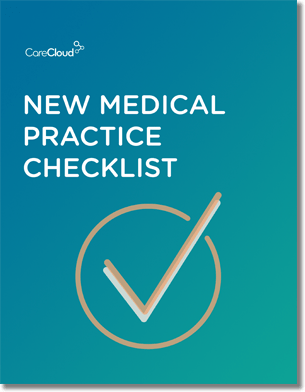The conclusion of our five-part whitepaper series featuring CareCloud’s ROI of EHR whitepaper has arrived. Today’s closing installment covers the Medicare and Medicaid EHR Incentive Programs, which are the most recognizable ways to realize a monetary gain from your EHR.
Earning Meaningful Use (MU) incentive payments is a trickier proposition than industry observers often give it credit for. Not surprisingly, the first hurdle is pursuing Meaningful Use dollars with incomplete knowledge of its requirements. CareCloud’s Meaningful Use expert, Michael Pepe, explains this succinctly:
“In an obvious sense, ‘misstepping’ any MU measure can cost you the incentive payment, especially at the end of the reporting period of that year. For instance, improperly educating your staff will cost you in lost revenue because their time is being taken by completing tasks that have no meaning.”
There are two areas that doctors and their staff can strategically target to ensure the best possible chance at attesting for Meaningful Use dollars: 1) Treating Core Measure 9 carefully and 2) Minimizing the potential for negative audits.
Treating Core Measure 9 carefully
According to the U.S. Department of Health and Human Services (HHS), the HHS expects 18,750 “small” (affecting less than 500 patients) data breaches annually. With HIPAA penalties ranging from as low as $100 all the way to $1.5 million, enhanced security will help practices avoid a data breach, the costly fines that come with it, the damage done to an organization’s reputation, and ultimately ROI.
In order to qualify for Meaningful Use, core measure 9 is a mandatory requirement that helps practices protect themselves from potential breaches and other security emergencies.
According to the CMS, to meet core measure 9 requirements, practices must “conduct or review a security risk analysis […] and implement security updates as necessary and correct identified security deficiencies as part of its risk management process.”
To do this successfully, it is imperative that practices conduct a risk assessment en route to having proper privacy and security policies in place for their office staff. Not doing so can cause a security breach, and having to alert patients that their sensitive information is at risk may also result in an HHS audit.
A key way to tackle core measure 9 is to use tools like the ONC Security Risk Assessment, which helps practices analyze their current security standings and tighten processes for long-term integrity.
Minimizing the potential for negative audits
In addition to preventing security breaches, the other important key to high ROI is ensuring one’s organization has a fundamental grasp of all Meaningful Use core measures and security requirements to minimize the risk of potential audits.
What the CMS expects to gain from conducting audits before and after the initial compliance and reporting period is the confidence that providers are maintaining Meaningful Use compliance. Practices need to be prepared.
As a provider attesting to receive an incentive payment, it is important to retain all relevant supporting documentation, in either paper or electronic format, for six years. Information requested from physicians may include:
- Proof that the physician is using a certified EHR system
- Documentation proving that, during the reporting period, at least 50% of patient encounters were entered into the EHR
- Supporting documentation used during the attestation for both Core and Menu Set Objectives/Measures
- Proof that a security risk analysis of the certified EHR was performed prior to the end of the reporting period
- Proof that certain features (i.e. drug-drug/drug-allergy interaction checks) were available, enabled, and active in the EHR system for the duration of the reporting period
While this may seem overwhelming, practices can simplify this process early on by ensuring they invest in an EHR with Meaningful Use reporting tools. Meaningful Use reporting helps practices track the status of their attestation process in real-time.
The bottom line is that audits cost money – on both an administrative and hourly staff level, before and after – and impede Meaningful Use reimbursements. As a result, documents should be kept organized and accessible.
Conclusion
At the end of the day, EHRs are significant investments for practices – both in terms of real dollars and the potential impacts they can have on revenue-generating workflow and productivity. But most in the industry agree their vision is worth the investment.
EHRs will ultimately become the backbone of the U.S. healthcare industry, expected to lower industry costs, improve patient care across the spectrum and transform care coordination. However, the steps to get there can be complex and derail near-term returns.
To achieve the highest possible ROI on an EHR, it is critical that practices adopt the trifecta of best practices.
The first step is to choose the right EHR product — one that’s highly usable, combines both charting and tasking in one solution, seamlessly integrates practice management, and is based in the cloud.
The second step is for practices to manage the implementation process in a way that accelerates time to value – specifically, focusing on integrating EHRs into existing workflows and rallying the participation of a broad team.
Finally, organizations should attack the Meaningful Use program by building a culture around security and employing best practices to minimize negative audits.
As the famous chemist and biologist Louis Pasteur once said, “chance favors the prepared mind.” In a healthcare environment marked by constant change and too often unpleasant surprises, EHRs are one area in which practices should carefully prepare in order to secure consistent, positive future returns.

Do you know what you need when setting up a new medical practice?



